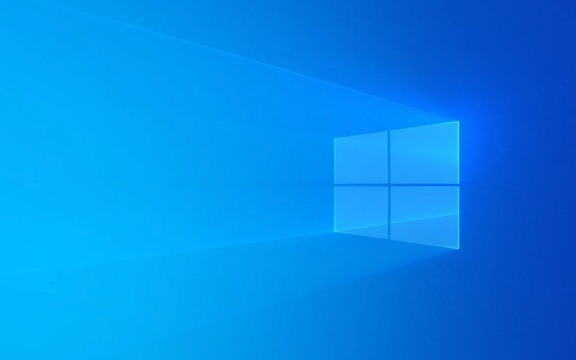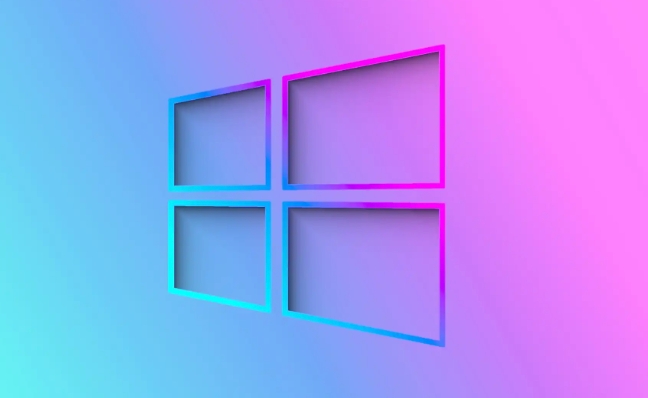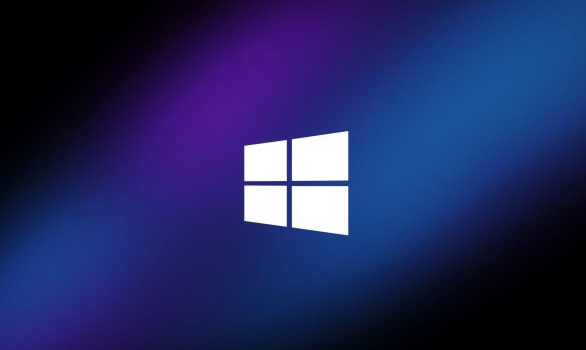To fix HDR calibration issues on Windows 11, first ensure your display supports HDR and is connected via HDMI 2.0a or DisplayPort 1.4. 1. Check display specs and confirm HDR is enabled in Settings > System > Display > HDR. 2. Use a compatible cable and port, trying alternatives if needed. 3. Access the built-in HDR calibration tool via Settings to adjust brightness and contrast with sample images. 4. Manually tweak HDR brightness and supported formats through display settings or on-screen menus. 5. For professional results, use a calibration device like Datacolor Spyder to create a custom ICC profile for accurate color output. These steps help optimize HDR performance for different content and environments.

HDR calibration on Windows 11 can sometimes be tricky, especially when colors look off or the display doesn’t perform as expected. If your HDR content looks washed out, overly bright, or just not right, it’s usually not a hardware fault — more often than not, it’s a settings issue. Here’s how to troubleshoot and fix common HDR calibration problems.

Check if Your Display Supports HDR and Is Properly Connected
Not all displays support HDR, and even among those that do, the implementation can vary. First, make sure your monitor or TV actually supports HDR. You can usually find this info in the product specs or by checking the manufacturer’s website.
Also, ensure you're using the correct cable and port. HDR requires either HDMI 2.0a or DisplayPort 1.4 or newer. Older cables or ports may not support the full HDR signal, leading to poor image quality or no HDR at all.

- Make sure HDR is enabled in Settings > System > Display > HDR.
- Confirm that your graphics card and cable support HDR.
- Try a different HDMI or DisplayPort cable if you suspect the current one is faulty.
Use the Built-in Windows 11 HDR Calibration Tool
Windows 11 includes a basic HDR calibration tool that can help adjust brightness and contrast levels for better visual performance. It's not as advanced as third-party tools, but it can make a noticeable difference.
To access it:

- Go to Settings > System > Display > HDR.
- Click on "Windows HD Color calibration" under the HDR section.
- Follow the on-screen steps to adjust the brightness and contrast using the sample images provided.
Keep in mind that this tool is more of a basic guide. It doesn’t measure actual light output or color accuracy, so if you're serious about calibration, you might want to consider more advanced methods.
Calibrate for Brightness and Contrast Manually
If the built-in tool doesn’t help much, you can manually adjust your display’s HDR settings. This is especially useful if your screen feels too dim or too bright for HDR content.
- In the HDR settings, there’s a slider labeled "Adjust brightness for HDR content". Play around with this to find a balance that looks natural.
- Some displays have their own on-screen menu where you can tweak HDR brightness and contrast. Check your monitor’s manual for how to access these settings.
- If your screen supports multiple HDR formats (like HDR10, Dolby Vision, etc.), try switching between them to see which one works best with your content.
Also, remember that HDR performance can vary depending on the app or video player you're using. For example, some streaming apps have their own HDR settings that might override system defaults.
Consider Using a Calibration Device for Accurate Results
If you want professional-level accuracy — especially for photo editing, video work, or high-end gaming — you should use a hardware calibration device like the Datacolor Spyder or X-Rite i1Display. These tools measure your screen’s actual output and create a custom ICC profile for both SDR and HDR.
- Connect the calibration device and run the accompanying software.
- Follow the guided calibration steps, which usually involve measuring brightness, color temperature, and gamma.
- Apply the generated profile and check your HDR content again.
This method is more involved and costs money, but it ensures your display is showing colors accurately, which is especially important if you rely on visual precision.
Fixing Windows 11 HDR calibration issues usually comes down to checking your setup, using the right tools, and adjusting brightness and contrast to match your environment. It’s not always perfect out of the box, but with a few tweaks, you can get it looking much better.
The above is the detailed content of Troubleshooting Windows 11 HDR calibration issues. For more information, please follow other related articles on the PHP Chinese website!

Hot AI Tools

Undress AI Tool
Undress images for free

Undresser.AI Undress
AI-powered app for creating realistic nude photos

AI Clothes Remover
Online AI tool for removing clothes from photos.

Clothoff.io
AI clothes remover

Video Face Swap
Swap faces in any video effortlessly with our completely free AI face swap tool!

Hot Article

Hot Tools

Notepad++7.3.1
Easy-to-use and free code editor

SublimeText3 Chinese version
Chinese version, very easy to use

Zend Studio 13.0.1
Powerful PHP integrated development environment

Dreamweaver CS6
Visual web development tools

SublimeText3 Mac version
God-level code editing software (SublimeText3)
 How to Change Font Color on Desktop Icons (Windows 11)
Jul 07, 2025 pm 12:07 PM
How to Change Font Color on Desktop Icons (Windows 11)
Jul 07, 2025 pm 12:07 PM
If you're having trouble reading your desktop icons' text or simply want to personalize your desktop look, you may be looking for a way to change the font color on desktop icons in Windows 11. Unfortunately, Windows 11 doesn't offer an easy built-in
 Fixed Windows 11 Google Chrome not opening
Jul 08, 2025 pm 02:36 PM
Fixed Windows 11 Google Chrome not opening
Jul 08, 2025 pm 02:36 PM
Fixed Windows 11 Google Chrome not opening Google Chrome is the most popular browser right now, but even it sometimes requires help to open on Windows. Then follow the on-screen instructions to complete the process. After completing the above steps, launch Google Chrome again to see if it works properly now. 5. Delete Chrome User Profile If you are still having problems, it may be time to delete Chrome User Profile. This will delete all your personal information, so be sure to back up all relevant data. Typically, you delete the Chrome user profile through the browser itself. But given that you can't open it, here's another way: Turn on Windo
 How to fix second monitor not detected in Windows?
Jul 12, 2025 am 02:27 AM
How to fix second monitor not detected in Windows?
Jul 12, 2025 am 02:27 AM
When Windows cannot detect a second monitor, first check whether the physical connection is normal, including power supply, cable plug-in and interface compatibility, and try to replace the cable or adapter; secondly, update or reinstall the graphics card driver through the Device Manager, and roll back the driver version if necessary; then manually click "Detection" in the display settings to identify the monitor to confirm whether it is correctly identified by the system; finally check whether the monitor input source is switched to the corresponding interface, and confirm whether the graphics card output port connected to the cable is correct. Following the above steps to check in turn, most dual-screen recognition problems can usually be solved.
 Want to Build an Everyday Work Desktop? Get a Mini PC Instead
Jul 08, 2025 am 06:03 AM
Want to Build an Everyday Work Desktop? Get a Mini PC Instead
Jul 08, 2025 am 06:03 AM
Mini PCs have undergone
 Fixed the failure to upload files in Windows Google Chrome
Jul 08, 2025 pm 02:33 PM
Fixed the failure to upload files in Windows Google Chrome
Jul 08, 2025 pm 02:33 PM
Have problems uploading files in Google Chrome? This may be annoying, right? Whether you are attaching documents to emails, sharing images on social media, or submitting important files for work or school, a smooth file upload process is crucial. So, it can be frustrating if your file uploads continue to fail in Chrome on Windows PC. If you're not ready to give up your favorite browser, here are some tips for fixes that can't upload files on Windows Google Chrome 1. Start with Universal Repair Before we learn about any advanced troubleshooting tips, it's best to try some of the basic solutions mentioned below. Troubleshooting Internet connection issues: Internet connection
 How to clear the print queue in Windows?
Jul 11, 2025 am 02:19 AM
How to clear the print queue in Windows?
Jul 11, 2025 am 02:19 AM
When encountering the problem of printing task stuck, clearing the print queue and restarting the PrintSpooler service is an effective solution. First, open the "Device and Printer" interface to find the corresponding printer, right-click the task and select "Cancel" to clear a single task, or click "Cancel all documents" to clear the queue at one time; if the queue is inaccessible, press Win R to enter services.msc to open the service list, find "PrintSpooler" and stop it before starting the service. If necessary, you can manually delete the residual files under the C:\Windows\System32\spool\PRINTERS path to completely solve the problem.
 How to run Command Prompt as an administrator in Windows 10?
Jul 05, 2025 am 02:31 AM
How to run Command Prompt as an administrator in Windows 10?
Jul 05, 2025 am 02:31 AM
To run command prompts as administrator, the most direct way is to search through the Start menu and right-click "Run as administrator"; secondly, use the Win X shortcut menu to select "Command Prompt (Administrator)" or "Windows Terminal (Administrator)"; you can also open the run window through Win R and enter cmd and press Ctrl Shift Enter to force running as administrator; in addition, you can set shortcut properties to achieve automatic running as administrator. All the above methods require administrator permission and confirmation through UAC. Pay attention to security risks during operation.







